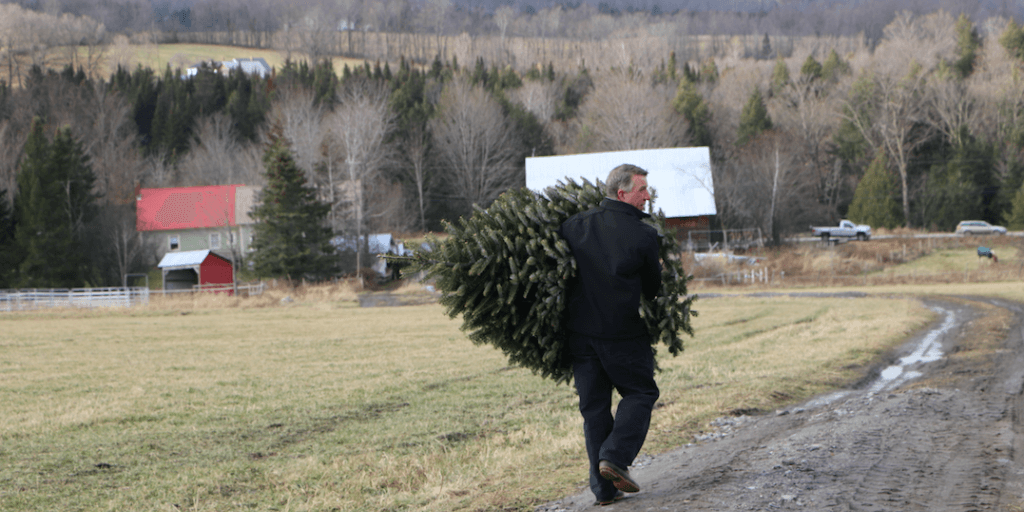BARTON — Governor Phil Scott and Agriculture Secretary Anson Tebbetts visited the Vermont Christmas Tree Farm in Barton today to highlight the importance of these businesses to the rural Vermont landscape and economy.
After touring the farm with owners Bill and Sue Tester, Governor Scott cut three trees, two for his offices in Montpelier and one to bring home.
The Governor and Secretary discussed with the Testers the challenge and benefits of having the tree farm on their Barton land.
In 2014, there were 71 tree growing operations in Vermont, 2,000 total acres in production, 119 thousand trees harvested, with an estimated value of approximately 2.9 million dollars.
“Cutting your own Christmas Tree is a wonderful Vermont tradition, and it supports our hard-working Vermont farmers who are helping to keep our hillsides green,” said Governor Phil Scott. “I’m happy to be able to decorate our office in Montpelier with an important symbol of Vermont agriculture.”
Like many Vermont tree growers, the Testers offer Balsam and Fraser Fir breeds on their farm. Vermont cut-your-own tree farms also grow hybrids, like the Tester’s signature “Fraslams” trees, and other breeds as well as provide trees to wholesale urban markets.
While Vermont trees are mainly consumed locally and in eastern urban markets, Vermont growers also ship trees to states as far away as Florida and California, and to a variety of foreign markets, including Bermuda.
Any property owner who grows Christmas trees can qualify for the Current Use program for productive lands, as long as the farm generates a minimum of $2000.00 annually in sales. Christmas trees are specifically included as an Agricultural use type in the program, like maple production.
“Vermont provides the perfect environment for growing high-value Christmas trees,” Tebbetts said. “Our sunny, cool and moist weather offers ideal growing conditions, assuring the quality of Vermont’s Christmas tree crop. Supporting agriculture activities that preserve our heritage and protect the landscape is a high priority for the Agency of Agriculture.”



